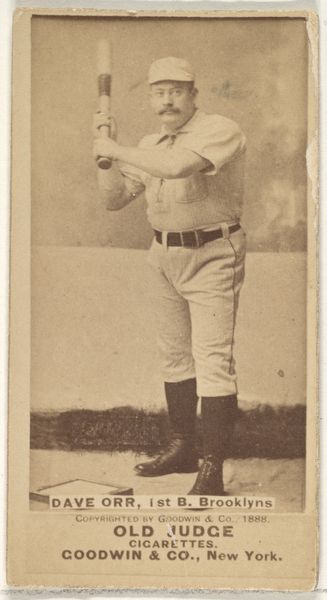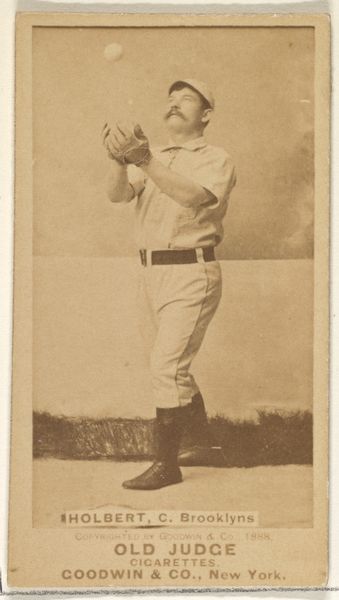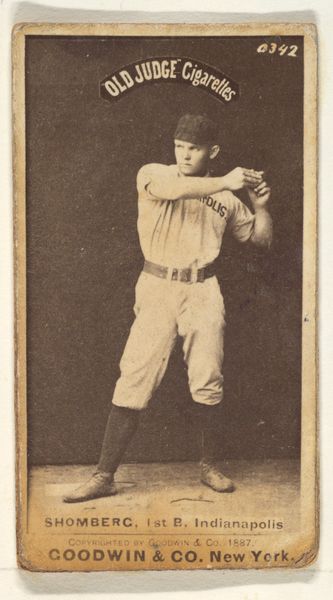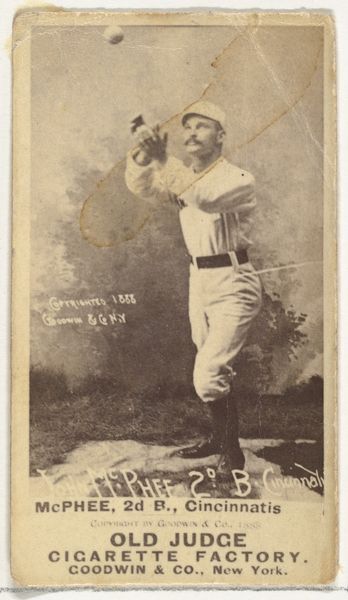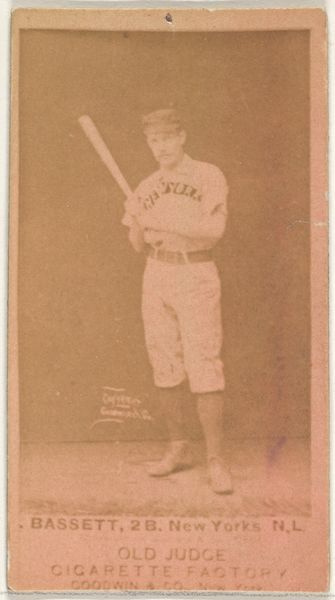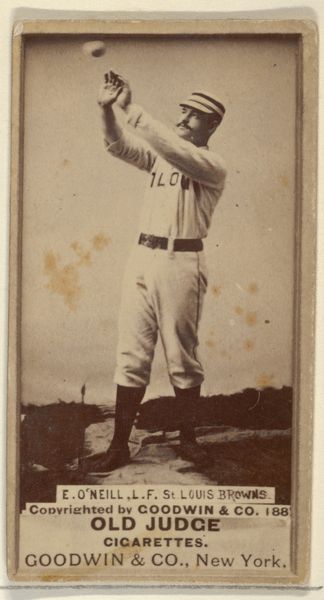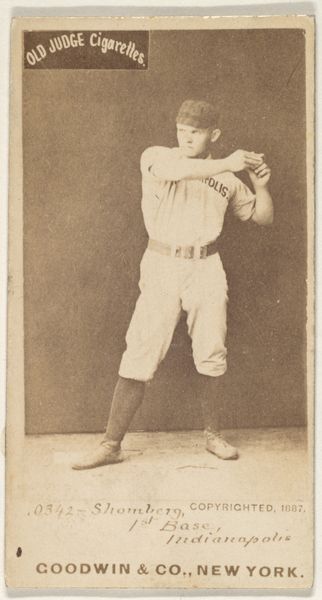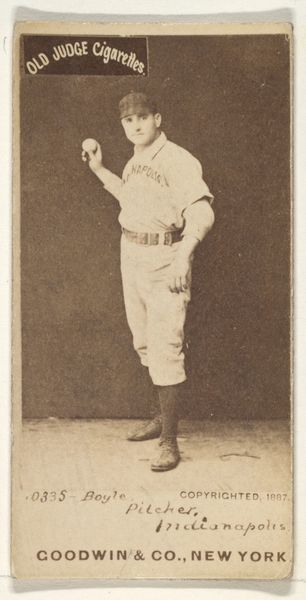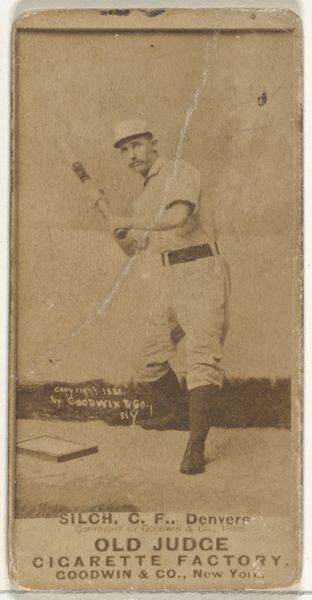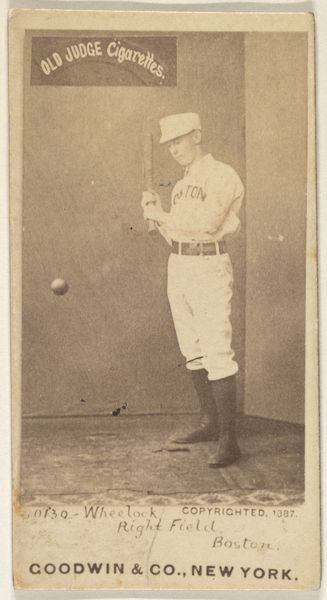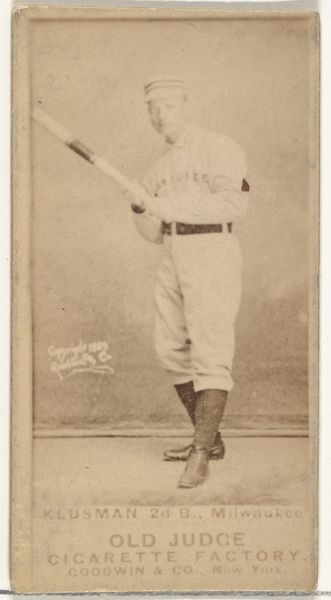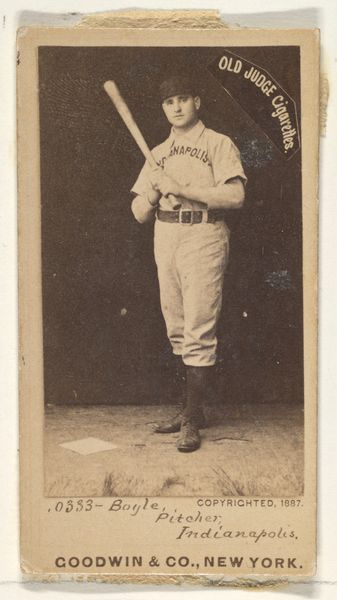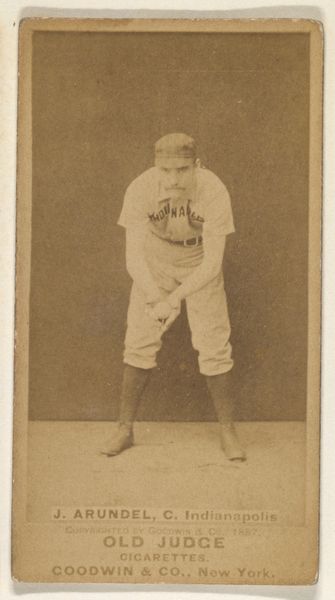
Shomberg, 1st Base, Indianapolis, from the Old Judge series (N172) for Old Judge Cigarettes 1887
0:00
0:00
drawing, print
#
portrait
#
photo of handprinted image
#
drawing
#
aged paper
#
toned paper
#
yellowing background
#
photo restoration
# print
#
old engraving style
#
baseball
#
historical photography
#
coffee painting
#
19th century
#
men
#
golden font
#
athlete
Dimensions: sheet: 2 11/16 x 1 3/8 in. (6.9 x 3.5 cm)
Copyright: Public Domain
Curator: Looking at "Shomberg, 1st Base, Indianapolis," a print dating back to 1887, one is immediately struck by its sepia tones and the pose of the baseball player. What's your take, Editor? Editor: There's a compelling melancholy to this. The warm sepia washes everything in nostalgia, almost a visual representation of fading memory. And then the pose... his upheld hands and face upturned seem reverential. Curator: Goodwin & Company, the makers of Old Judge Cigarettes, created this card. This image is part of a series meant to be included in cigarette packs. This, like other imagery, becomes part of an ongoing historical visual archive through repeated consumption. Editor: Yes, it's fascinating how an item designed for fleeting commercial purposes can gain lasting historical significance. In this context, sport and leisure intersect with labor exploitation within the tobacco industry, reminding us that progress always comes at a cost to some communities. And the players became icons, representatives of early baseball's cultural construction, mostly centered around white athletes and their fame. Curator: Observe how the details contribute to an understanding of its time: The stylized typeface announcing “Old Judge Cigarettes” juxtaposed with the player’s name and team, Shomberg of Indianapolis. There’s a symbolic interplay between industry, athleticism, and local pride. Note the yellowed, aged quality of the card, a physical testament to its history, enhancing its aesthetic appeal. The patina of time reminds us that even fleeting moments are recorded, imprinted and shared through physical matter, taking on their own historical weight through that material. Editor: Absolutely. The toning adds to the sense of distance. Seeing Shomberg rendered through this aged lens allows us to see him less as an individual and more as an archetype, embodying ideas of sportsmanship, success, and early consumer culture's visual language. This card isn't just a photograph; it's a cultural artifact, a tiny piece of a larger narrative about American identity in the late 19th century. The act of preserving it grants it agency. Curator: Indeed, by capturing and sharing baseball players like Shomberg in the material format of printed cards, symbols and ideals become enshrined within cultural consciousness through consumption. We recognize these gestures, then, through repeated consumption and memory. Editor: Well, looking at Shomberg reminds us that images and objects always come loaded with social and political meanings—even those intended as simple promotions—creating visual continuities.
Comments
No comments
Be the first to comment and join the conversation on the ultimate creative platform.
